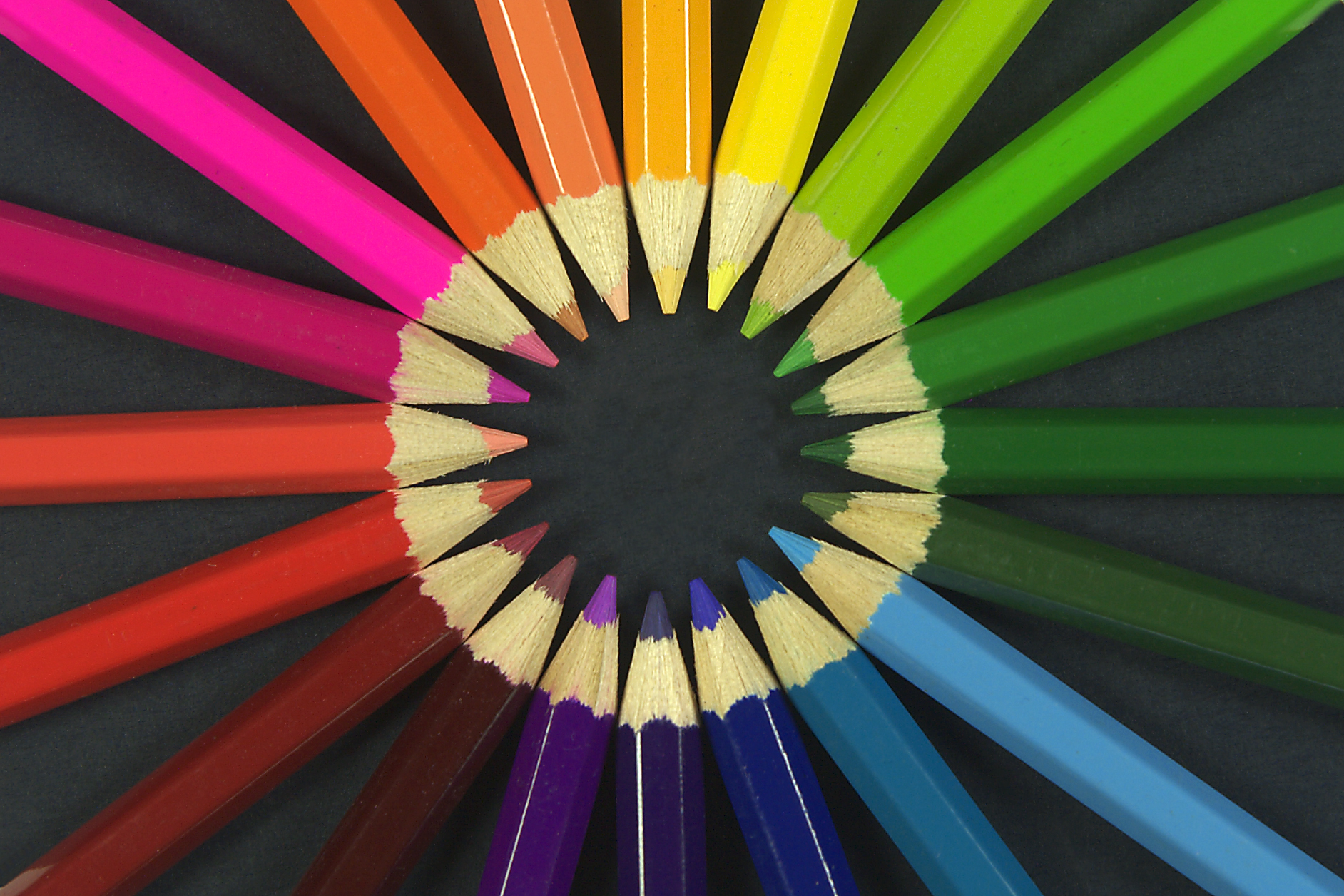RAINBOW ORDER
MY SATURATION ORDER Though I know the rainbow order, in my own home I tend to colorize things differently, according to what I've decided to call a saturation order. (I should clarify that I didn't set out to do non-rainbow order... I just put things how I liked them, and one day I decided to analyze my choices!) Looking at three places--my thread storage, my closet, and my earring rack--I find the same order: White, yellow, pink, (orange), red, brown, green, gray, (blue), (black) The colors in parentheses are colors I don't have much of. For instance, I don't own a single orange shirt, but I have some orange jewelry and two spools of orange thread. I don't wear blue at all (except blue jeans, and they don't count because they're so ubiquitous in America that they are more of a neutral than a color choice!), but I have blue and aqua threads for alterations. I don't wear black, but I have a ton of black thread because it's versatile for sewing any dark fabric. Like the rainbow model, my color order divides warm from cool colors:
Not evenly divided; I clearly prefer warm colors! Unlike the rainbow order, this model doesn't include all colors. I don't have a spot for violet, for instance. And my pinks are various shades of rose, not hot-pink. So what is saturation? Think of what your room looks like in the moonlight, when the "Cold-hearted orb that rules the night / Removes the colours from our sight / Red is grey is yellow white". When everything turns some shade of gray, what you have instead of color is saturation, or how filled a thing is. As Graeme Edge points out, yellow looks like white (lower saturation) and red looks like gray (darker than white, so a higher saturation). Blue and purple might look like black (very high saturation). Saturation was the reason that Hitchcock had to use chocolate syrup to represent blood in the shower scene of Psycho: the red theatrical "blood", once mixed with water in the drain, became pink, and pink was not highly saturated enough to show up on black and white film! Chocolate syrup, being darkly saturated, showed up even after mixing with water. So it seems that the organizing principle behind my instinctive color organization is saturation: NO SATURATION ---> LOW SATURATION ---> MEDIUM SATURATION ---> HIGH SATURATION White ---> Yellow, Pink ---> Orange, Red, Brown, Green, Gray ---> Blue, Black When I do the rainbow order, I have to think about ROYGBIV, but when I do saturation order, I naturally put things the same place every time.
How do you organize color? What colors do you have around you all the time?
1 Comment
The Sister
7/6/2018 06:18:25 am
Interesting... I recently learned that there are differences between hue, tone, shade, tint, etc.
Reply
Leave a Reply. |
Karen Roy
Quilting, dressmaking, and history plied with the needle... Sites I EnjoyThe Quilt Index Categories
All
Archives
March 2024
|


 RSS Feed
RSS Feed